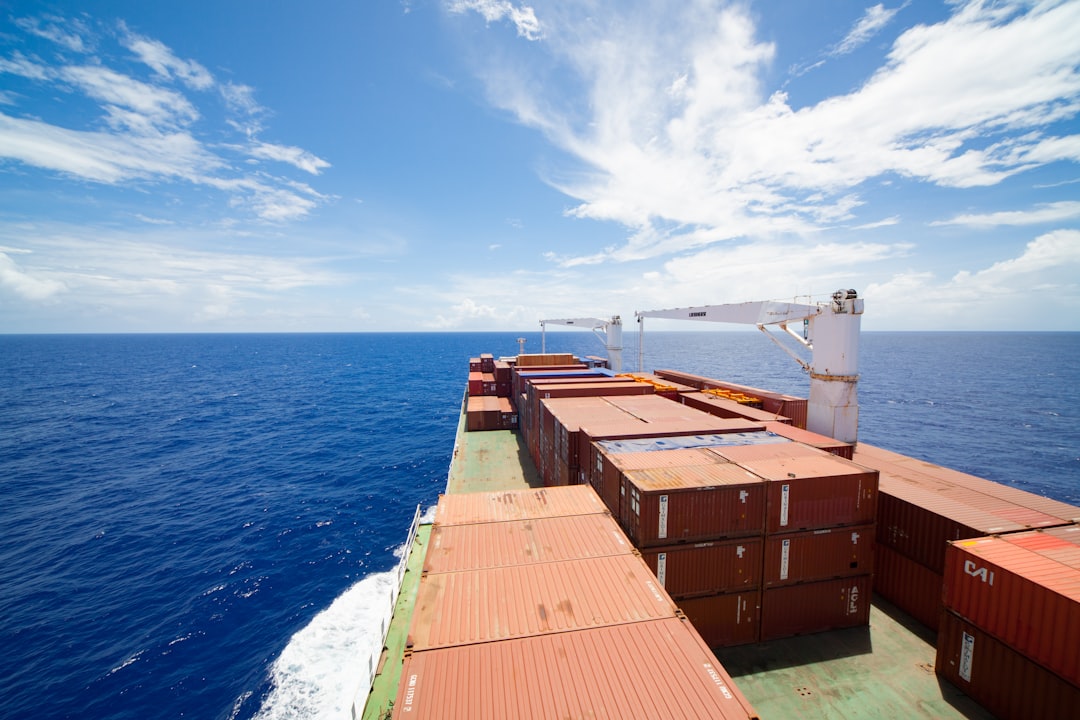In today’s interconnected world, the efficient movement of goods is paramount to business success. This requires a sophisticated understanding and implementation of both maritime and land logistics strategies. This blog post delves into the key aspects of integrating these two crucial components for a truly optimized supply chain.
1. Maritime Logistics: Charting the Course to Efficiency
Maritime logistics forms the backbone of global trade, transporting the vast majority of goods across oceans. Optimizing this aspect requires careful consideration of several factors. Choosing the right vessel type – from container ships to bulk carriers – is crucial, depending on the cargo’s nature and volume. Route optimization, considering factors like weather patterns, canal transit times, and port congestion, is equally important. Real-time tracking and monitoring using GPS and other technologies allow for proactive issue management, minimizing delays and potential losses. Furthermore, effective port management, including efficient loading and unloading processes and streamlined customs procedures, significantly impacts overall efficiency. Strategic partnerships with shipping lines and port authorities are vital for securing favorable rates and prioritizing cargo handling.
2. Land Logistics: The Final Mile and Beyond
Once goods arrive at their destination port, efficient land logistics take over. This involves a complex network of transportation modes, including trucking, rail, and intermodal transport. Careful selection of transportation modes is essential, considering factors like cost, speed, and the nature of the cargo. For example, trucking offers flexibility for door-to-door delivery, while rail is more cost-effective for large volumes over longer distances. Intermodal transport, combining multiple modes, offers a balance of cost and efficiency. Effective warehouse management is also crucial, encompassing inventory control, order fulfillment, and efficient storage practices. Optimizing warehouse locations near major transportation hubs minimizes transportation costs and delivery times. The use of advanced technologies like warehouse management systems (WMS) and transportation management systems (TMS) significantly improves efficiency and transparency throughout the land logistics process.
3. Integrating Maritime and Land Logistics: A Seamless Transition
The true power of optimized logistics lies in the seamless integration of maritime and land components. This requires close collaboration between different stakeholders, including shipping lines, freight forwarders, trucking companies, and warehouse operators. Effective communication and information sharing are paramount, enabling real-time tracking and proactive problem-solving. Utilizing a centralized logistics management system can provide a unified view of the entire supply chain, from origin to final destination. This allows for better forecasting, improved inventory management, and enhanced coordination across different modes of transport. Furthermore, careful planning of the entire journey, including port selection, inland transportation routes, and warehouse locations, is crucial for minimizing delays and maximizing efficiency.
4. Technology’s Role in Optimizing Maritime and Land Logistics
Technology plays a crucial role in modern logistics, offering solutions to enhance efficiency and transparency. GPS tracking, electronic data interchange (EDI), blockchain technology, and the Internet of Things (IoT) are transforming the industry. GPS tracking provides real-time visibility of cargo location and movement, enabling proactive management of potential delays. EDI streamlines communication and data exchange between different stakeholders, reducing paperwork and improving efficiency. Blockchain technology enhances security and transparency in supply chain transactions. IoT sensors can monitor cargo conditions, temperature, and humidity, ensuring product quality and preventing damage. Advanced analytics and machine learning algorithms can predict potential disruptions and optimize routes and schedules, leading to significant cost savings and improved efficiency.
5. Overcoming Challenges and Future Trends in Maritime and Land Logistics
Despite advancements, challenges remain in maritime and land logistics. Port congestion, geopolitical instability, fluctuating fuel prices, and regulatory complexities can disrupt supply chains. Addressing these requires proactive risk management strategies, including diversification of transportation routes and suppliers, robust contingency planning, and close monitoring of geopolitical events. Future trends point towards increased automation, the use of autonomous vehicles, and the further integration of artificial intelligence and machine learning in logistics operations. Sustainable practices, such as the use of alternative fuels and reduced emissions, are also gaining importance. The industry is moving towards a more data-driven, intelligent, and sustainable approach to optimize the movement of goods globally.
By strategically integrating maritime and land logistics, businesses can achieve significant improvements in efficiency, cost reduction, and customer satisfaction. Embracing technological advancements and proactive risk management are crucial for navigating the complexities of global trade and securing a competitive edge.
SEO Tags:
Maritime Logistics, Land Logistics, Supply Chain Management, Global Trade, Logistics Optimization




